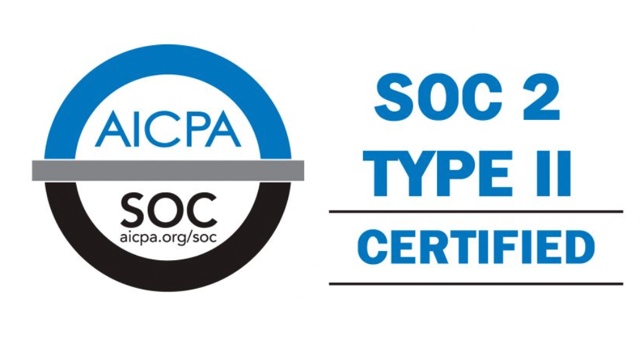
From 100 to 1 million Transfers: Scaling MFT for Enterprise Growth
From 100 to 1 million Transfers: Scaling MFT for Enterprise Growth Ever wondered what happens when your daily file transfers multiply by
The Configuration requirements chapter defines the elements that have to be configured on EBICS Client to transact with a bank.
For detailed configuration information, see the EBICS Client User Guide.
Before using the EBICS Client, you must configure Sterling B2B Integrator.
Because the FDL order type uses the file system to store the payload, it is important to plan file system storage accordingly. A large FDL payload requires about 6 times as much file space as the payload size itself. For example, a 5 GB payload requires over 30 GB of file space in Sterling B2B Integrator to process the request.
Configuring an existing Sterling B2B Integrator user as an EBICS Client user is the first step towards transacting with the bank.
This includes specifying values for attributes, such as, user type, certificate type, and so on. Three types of users can be configured on EBICS Client;
Another user type, technical user can also be configured. EBICS Client supports X.509 and RSA Keys standards to define digital certificates. User configuration attributes vary based on the user type and certificate type. Configuring Certificate and key related information is not required for an EBICS Client admin or EBICS Client operator. For more information about user types, see Managing Profiles for Users.
There are three order types used for user initialization: H3K, INI, and HIA. H3K is the simplest and transmits all three public certificates at the same time. However, H3K cannot be used in all cases, such as if trusted keys are used or with protocol version H003. If you cannot, or prefer not to, use H3K, you can use INI and HIA together to transmit the public certificates. For more information about user initialization, see Initializing a User in the EBICS Client User documentation.
A bank is the primary entity in an EBICS transaction. It hosts the server with which a partner and users who are associated with the partner can perform EBICS transactions.
An integral part of the bank configuration is the bank ID or host ID. After a contract is signed, the bank shares the bank ID or host ID together with the URL of the bank with the partner. An EBICS Client admin creates a bank profile using the information shared by the bank with the partner. If the bank URL uses a secure HTTP protocol, then an HTTPS certificate is required. The HTTPS certificate for the bank is created on Sterling B2B Integrator and configured using EBICS Client.
The format or type of file that is uploaded or downloaded is identified by the File Format attribute. An order type can have zero or more file formats. A file format can contain the country code and supported order types.
An offer is a super set of order types and file formats. An offer is associated with a bank ID to specify the possible order types and file formats that can be used when transacting with the bank. Offers provide the advantage of grouping many bank transactions and handling them together.
User permissions define the offers, order types, and file formats, an EBICS Client user can process on EBICS Client.
Authorization level | Permission type | Description |
|---|---|---|
| E | Signer | Single signature. It is the strongest authorization level. |
| A | Signer | Primary signature |
| B | Signer | Secondary signature |
| T | Submitter | Transport signature. Transport signatures are not used for authorization of bank-technical orders, but for authorized submission to the bank system. |
Sterling B2B Integrator - EBICS Client Architecture and Key Features
Sterling B2B Integrator - EBICS Client Overview
Sterling B2B Integrator - Order Submission
Browse Categories
Share Blog Post

From 100 to 1 million Transfers: Scaling MFT for Enterprise Growth Ever wondered what happens when your daily file transfers multiply by

In today’s fast-paced world of data analytics and AI, optimizing your data infrastructure is key to unlocking valuable insights and driving innovation.

In today’s fast-paced world of data analytics and AI, optimizing your data infrastructure is key to unlocking valuable insights and driving innovation.
We are a forward-thinking technology services provider dedicated to driving innovation and transformation across industries.


| Cookie | Duration | Description |
|---|---|---|
| cookielawinfo-checkbox-analytics | 11 months | This cookie is set by GDPR Cookie Consent plugin. The cookie is used to store the user consent for the cookies in the category "Analytics". |
| cookielawinfo-checkbox-functional | 11 months | The cookie is set by GDPR cookie consent to record the user consent for the cookies in the category "Functional". |
| cookielawinfo-checkbox-necessary | 11 months | This cookie is set by GDPR Cookie Consent plugin. The cookies is used to store the user consent for the cookies in the category "Necessary". |
| cookielawinfo-checkbox-others | 11 months | This cookie is set by GDPR Cookie Consent plugin. The cookie is used to store the user consent for the cookies in the category "Other. |
| cookielawinfo-checkbox-performance | 11 months | This cookie is set by GDPR Cookie Consent plugin. The cookie is used to store the user consent for the cookies in the category "Performance". |
| viewed_cookie_policy | 11 months | The cookie is set by the GDPR Cookie Consent plugin and is used to store whether or not user has consented to the use of cookies. It does not store any personal data. |
Thank you for submitting your details.
For more information, Download the PDF.
Thank you for registering for the conference ! Our team will confirm your registration shortly.
Invite and share the event with your colleagues
IBM Partner Engagement Manager Standard is the right solution
addressing the following business challenges
IBM Partner Engagement Manager Standard is the right solution
addressing the following business challenges
IBM Partner Engagement Manager Standard is the right solution
addressing the following business challenges